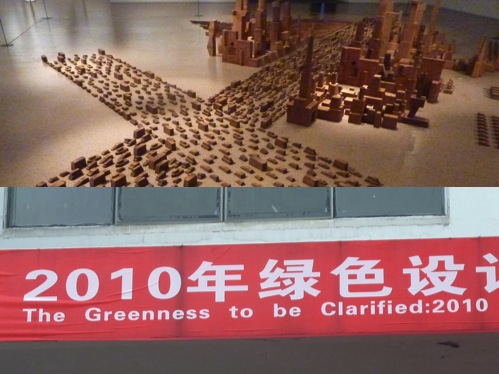
“Greeness to be clarified” is the claim of the Conference on Green Design 2010 organised by the Hunan University of Technology May 21-25 in Zhuzhou, China. It’s a good title… As a lot has effectively to be clarified about sustainability today. It’s striking when strolling across the huge EXPO path where no pavilion -be a city, a company or a country- forgets to advert any kinds of effort to be green as the ultimate solution. And it’s also true for universities and design education in particular which are seeking for which way to go between enjoying two digits national growth or wondering what designing more sustainable ways of living means when 300 million Chinese are expected to rush from the countryside into the cities in the next 20 years…
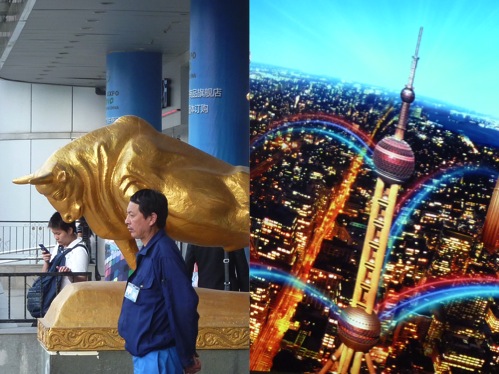
“How many time do you think China will need to catch-up with France?” asks Pr. Wang, ink painter teaching at Hunan University when driving through the huge building plant of the future Changsha airport… The country is rushing to catch-up. It’s even more clear when visiting Shanghai Urban Planning Exhibition Hall and considering the football field large model with thousands of skyscrapers demonstrating how Shanghai should look like in the near future. But it is not clear to catch-up with what and if visions have been updated… A 360° 3D animation immerses visitors into the ever astonishing dream of the city of tomorrow that dominate city planning since more than 50 years now…
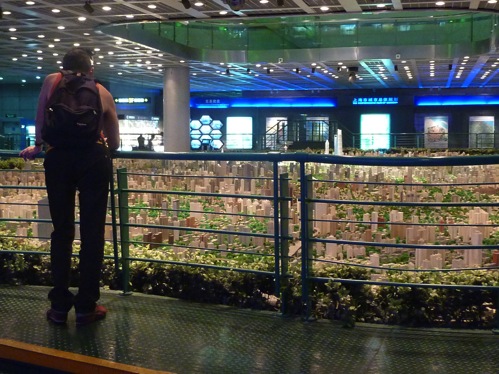
The gigantic EXPO is the ultimate one-to-one scale model that -if necessary- demonstrates the lack of scenarios for the future. Starting from the form: where is the exhibition? Nothing on display but a more of less lucky scenography of screens showing conventional corporate communication to rushing visitors. The architecture of the pavilions is really worth to see it but… it is asking also questions: how this demonstration of creative architecture in the ‘EXPO playground’ will cope with outside million of people packed in high-rise if it is unable to adapt the flow of visitors that have to stand in lines for hours to sneak 5 mn inside each pavilion.
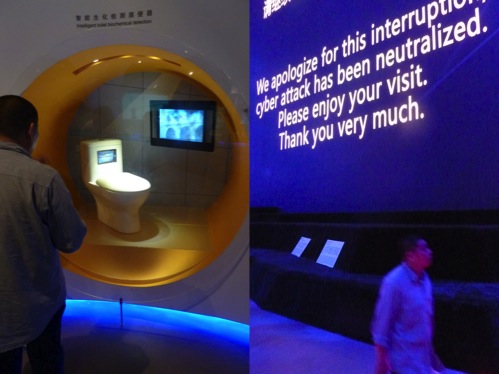
‘Better city, better life’ should be searched at another scale and the real richness of the expo is elsewhere. To see it you have to look down in front of you and watch the thousands of English speaking Chinese students that volunteers as assistant staff, smiling all day, supporting tired visitors and representing the only true part of humanity in this mega-galactic old dream…
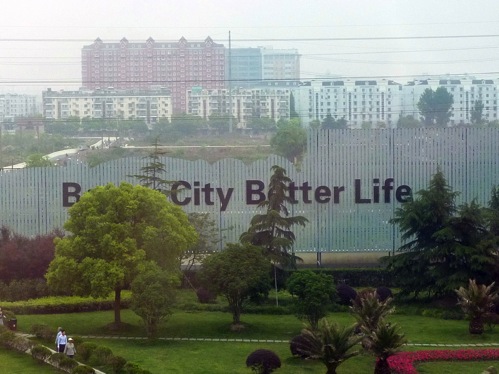
Coming back to the Green Design conference, many interventions were searching for new inspirations to shift away from the western consumption-centric imported model: it’s difficult without a deep understanding of the Chinese language and philosophy to assess the potentials for instance of the “Shanshui City”, presented by Hu Jie, Director of Beijing Tsinghua Urban Planning and Design Institute or Prof. Liu Guanzhong of the Academy of Art and Design of the same Tsinghua university advocating design as third category of wisdom and ability for human to survive in addition to science and art. But which design?
Many of these works are fundamental research as European green architects reviewed by Mario Brizzi of Università degli studi Florence or the personal research of a green philosophy in vegetal digital sculpture of Prof. Liu Yudong, National Chiao Tung University, Taiwan. Moreover they start from scratch as if time and resources where sufficient to rebuild our world in a proper way… Benny Leong, School of Design, Hong-kong Polytechnic University in more pragmatic terms depicts a large panorama from simple eco-design improvements to more radical scenarios of sustainable lifestyles exploring the use of distant digital collaboration. An on-going field study investigates most sustainable and unsustainable aspects of Chinese lifestyles and shows an interesting attempt to create a common ground and a digital platform among the DfS (Design for Sustainability) network of main Chinese universities…
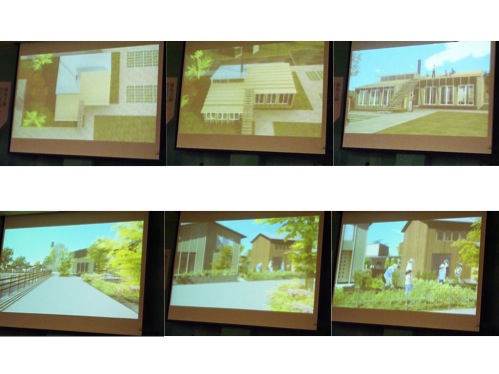
Tomohiro Fukuda described in his speech Osaka University current developments in green design with 2 scenarios capturing the ambivalence in the conference participants between 2 temptations: the sustainable techno-optimism and a reasonable slowing down. Moreover, he presented the Kobunaki Eco-village using a 3DCG simulation software: flying above an area of Omihachiman city, the camera plunge down to the ground in a vertiginous pure style of 3D urban planning phantasmagoric visualisations but instead of skyscrapers it lands into a neighbourhood with habitants cultivating their orchard and kids playing in the middle of the street: clever mistification or signal of change of mindset…?
J.W. Drukker, professor of design history in Delft university concludes his speach acknowledging the only really successful birth control policy achieved by the Chinese government in the recent years asking indirectly the critical question of balance between ‘push’ and ‘pull’ measures in the rapid transformative change towards sustainability… an great risks that too match plannification disconnected from the people real life represents…
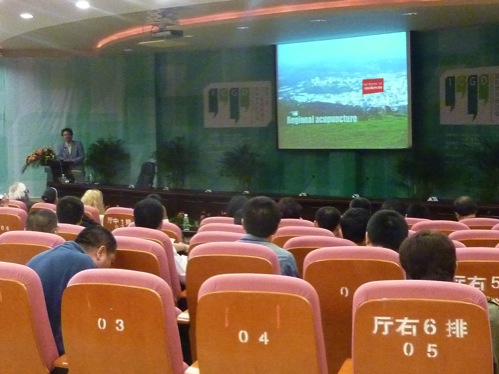
The hypothesis of a transformative change towads sustainable ways of living through an ‘acupuncture’ of micro-projects we presented was welcome: the challenging metaphor in the country where this traditional medecine was invented seems to effectively inspire a different attitude to projects. The experiences of residences of La 27e Région in France as an innovative process to activate energy of local projects is a promising way to pass from theory to practice. In particular the debate between participants during the second day largely agreed it inspires a necessary change in the design attitude teach to the students: as Chen Anying vice chief editor of the journal of Zhuangshi, academic journal for arts and design in China and co-organisor of the conference reported in plenary, it time to pass from a ‘design for’ to ‘design with’…
François Jégou